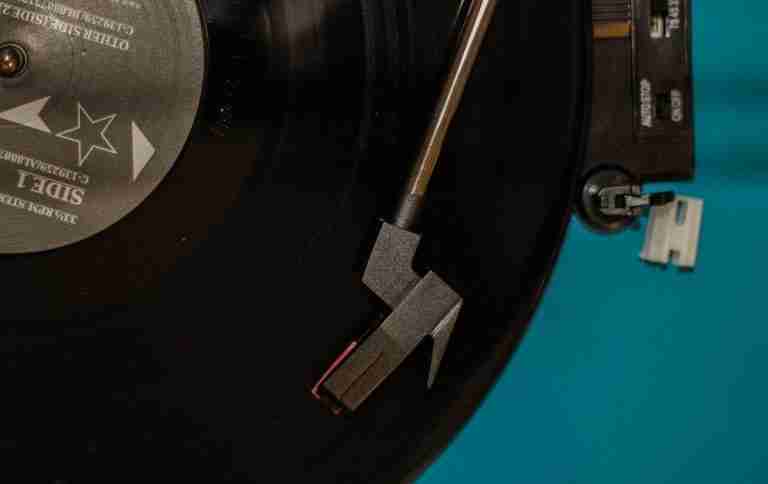Learning tunes. Memorizing standards. Building a solid repertoire that continues to grow. These ideas are always hovering at the back of an improviser’s mind. We make lists of tunes, print out lead sheets to study, set deadlines to learn a ton of tunes by and so on and so forth. For years, I did all of these and more, and can tell you from experience that these methods are simply ineffective. Trying to quickly memorize a tune from a lead sheet or rushing to cram as many tunes as possible will get you nowhere.
The process of building a lasting repertoire of tunes, however, is truly a daily effort. To properly learn and ingrain standards, you need to set aside time and incorporate related skills into your daily practice routine, rather than periodically trying to stock up on standards.
While some aspects of practice for a jazz musician focus on creativity and freedom, this is one area that requires dedicated time and discipline – sitting down with the records and slowly ingraining melodies and progressions aurally as well as mentally.
You’ll quickly find that this approach is much more beneficial than making a huge list and trying to attack ten tunes at once. Here are a few key concepts to keep in mind as you get to work on building your repertoire:
There are only so many tunes
When you first are confronted with learning tunes, the sheer number of standards to learn is downright overwhelming. Pick up a real book or look at a list of jazz standards and you’ll quickly see that you are now expected to know hundreds of tunes.
Despite how it looks, try not to get discouraged right away.
If you think about it, the number of tunes considered jazz “standards” hasn’t changed significantly since the 1960’s. Musicians are still playing the tunes like All the Things You Are, Body and Soul, Stella, etc. night after night.
Look at it this way. That list of tunes that you’re looking at right now, will be the same list of tunes staring you in the face five years from now. Ten years from now – same thing. The “Great American Songbook” has been established and the core tunes that a jazz musician is expected to know continues to remain the same.
Instead of seeing a list of tunes that is infinitely expanding and losing faith in your ability or giving up, realize that there are a finite number of tunes with which you can make noticeable progress. We have more time than we think to work on these tunes and you can make great strides in the space of one year. Take on this challenge one tune at a time. Strive to improve a little and learn more each day.
You know that tune?
What does it really mean to “know” a tune?
There is a common idea that knowing a tune consists of just knowing the melody and being able to recite the chord changes. This is something you can do by looking at a lead sheet, but how long will you remember it for? Do you really have control of that tune?
I remember trying to memorize standards in this way: staring at a page from the real book and reciting the chord changes over and over, until I had the chord names memorized. As I went to perform these tunes, I quickly realized that I was scrambling to remember chord names and not in control of the tune or improvising in the moment at all.
Note to past-self: Music is not a mental exercise, you have to use your ears! One of the byproducts of trying to learn as many tunes as possible, is that in your rush you never really master a tune or the skills that come with fully learning the tune. In reality you’re just scratching the surface of what the tune is really about.
Rather than memorizing melodies and chord changes, I should have been cultivating the ability to hear melodies and changes and developing language to play over these tunes. Coming to terms with this fact led to a huge turning point for me. As my ears improved, learning tunes became mush easier and actually fun, instead of a difficult chore hanging over my head.
If you can’t hear what is going on with a tune and if you don’t have anything to play over it, all tunes are going to be equally frustrating to you. What’s the point of memorizing another set of melody and chord changes if you are having trouble playing over the ones you’ve just learned. Do yourself a favor and spend enough time on a tune so that you actually master it and can do something musically with it.
How you learn is vital
There are really two areas of building a repertoire that are essential: your ears and your approach to learning- and both are fundamentally connected.
Learn to hear
If you look at the best improvisers out there and the musicians that know tons of tunes, they all have something in common: they have great ears. They’ve worked for years on developing their ears and hearing melodies and chord progressions, both in the practice room and on the bandstand.
Developing your ear is essential to effectively learning tunes and building a solid repertoire. The faster that you’re able to hear chord progressions and figure out melodies, the faster you’ll be able to memorize them. If you aren’t doing so already, make ear training exercises a part of your daily routine and focus on improving your ability to hear chord changes.
Learn to learn
The way in which you learn a tune is the most important factor in building your repertoire. Your goal should be to never forget the tune you are learning and the method you use will determine this. Use your ears and take your time. If you learn a tune correctly, not only will it be permanently ingrained, but you’ll also improve your ears and overall musicianship at the same time.
Going from unlimited to specific
One of the most useful skills in learning is seeing similarities and connections in new subjects that you encounter. In other words connecting what you know with something you are unfamiliar with. This couldn’t be more true for learning tunes and after you’ve worked on improving your ear, this will become immediately apparent and a lot easier.
The first step is to realize that with each new tune, you don’t have to re-invent the wheel.
The majority of standards have the same fundamental components: Major and minor tonalities, major and minor ii-V’s, turnarounds, etc. By being able to hear these progressions and having language for each of these sounds, you’ll be able to play over any standard, whether you’ve memorized it or not.
Understanding that you don’t have to learn hundreds of completely separate and unrelated tunes is crucial to formulating a plan of action. Most of the “standards” that we’re expected to learn are more similar than is initially apparent. See the similarities in melodic construction, chord types, harmonic progressions, and form between all of the tunes that you are learning.
A lifetime of work
Some tunes you’ll never be done with because there is always room for improvement or creativity. The blues, rhythm changes, and All the Things You Are for instance, are played by musicians for their entire careers.
You are never done with a tune. As your harmonic vocabulary, instrumental technique, and ear improves, you’ll approach these standards in a completely new way, bringing these new concepts and skills to the same old tune.
When you approach it with this attitude, every tune can have infinite harmonic possibilities and creative avenues. If you happen to hear someone say they are bored with a tune in the future, you can rest assured that the tune is not the problem.










